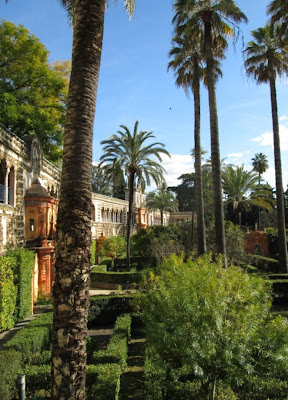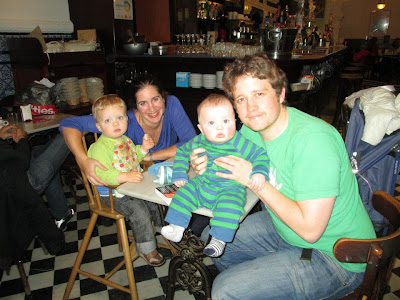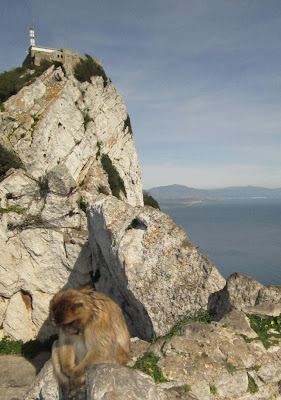I signed up for the Olympic distance London Triathlon at the
end of last year. The prospect of a 1.5 km swim, 40 km cycle and 10 km run
around the monuments of London excited me. Every so often I need a new
challenge and I find that things of this nature give an additional focus to a
year and provide a helpful incentive to get off my arse and be a bit more
healthy. I had added incentive this year, hoping to raise funds for a charity
dear to a very poorly friend of mine (the fantastic Royal Marsden). There was
therefore no turning back.
The challenge of a triathlon is balancing the training and
race effort on the three very different disciplines. I have done quite a lot of
cycling, run the odd half marathon and the solitary full marathon, so I made
the conscious choice to concentrate nearly all my training on the swimming. In
this choice lay future pain…
I have always considered myself a reasonably strong swimmer,
being the water baby that I am, but the truth is that I have never been all
that good at freestyle. I am fine over a very short sprint, but I have never
been able to get the breathing quite right. Triathlon obsessed friends had
recommended doing a bit of coaching, but I could not quite bring myself to
spend the money. So I just practised.
Weekly swims at the local pool shook the rust off and got me
going, and I finally became a half competent freestyle swimmer going back and
forth and back across a bay in front of my Greek house. A month of 1 km a day
swims put me in better shape than I have been for years. Better still, covering
so much distance just above the sea floor turned into a surprisingly fruitful
Mediterranean wildlife safari. Squid, snails, flatfish, flying gunard (check
them out on google - very cool), octopus and a dozen other variety of fish. The
most remarkable and surprising encounter was a 5 minute swim next to a trumpet
fish. These long, thin, alien looking fish are not even meant to live in the
Med. It appears a few have slipped through the Suez Canal!
As for runs and cycles, let's just say I went for the minimalist
training approach... and as for combining these disciplines with each other in
training the very minimalist approach.
THE ARENA
My thoughts of an idyllic race around the landmarks and
prettier parts of London were dashed on arrival. Setting off from the Excel
centre in the east end docklands, the route stuck resolutely to unattractive
parts of the capital. The swim was to be in the sloppy green water of the dock,
the cycle around a loop of an East London dual carriage way and the run around
the Excel centre itself. Not exactly inspiring.
That is where my complaints of the event cease. So much
effort goes into arranging the biggest participation triathlon in the world and
they do a great job. There is a carnival, if a bit corporate, atmosphere at the
Excel. Thousands of people milling around stalls which are selling (and
occasionally giving away) everything triathlon related you could imagine and a
lot more besides. I felt a real amateur with my knackered old hybrid bike,
borrowed wet suit and speedos. Everywhere I looked were hardcore triathletes
with top of the range break the bank road bikes and tri-suites.
The scale of the place and occasion struck home when I made
it through to the change over area. Rows upon rows upon rows of change over
lanes, complete with parked bikes and kit. This is a key part of the logistical
nightmare of arranging a triathlon. Shepherding huge amounts of people at
varying times in and out of a confined area to prep for the swim, transition
from dripping wet wetsuit into cycle gear and then finally get ready for the
run. This vast hall had room for a couple of thousand people at a time. I was
not sure I was ready for this!
THE RACE
If you want to do “hopeless amateur” at a triathlon, I doubt
there are many better ways to line up at the start line then with your wetsuit
back-to-front. Having only tried on the wetsuit once before since borrowing it
from a mate (thanks Ramsay), that is exactly what I did, triggering an
embarrassingly ungainly torso tustle with neoprene in front of the crowds.
Now sweating and a bit perturbed, I joined in with the rest
of my start group in the MC prompted high-fives and manly war grunts. Then out
the door and into the disconcertingly green Thames water in the Royal Victoria
Dock.
 |
Thanks to Virgin Triathlon for this pic
|
I had heard many a horror story of triathletes beating the
shit out of each other on the swim, all punches, pulls and half drownings.
Whereas there was the odd inadvertent heavy contact with those around me
(usually I imagine at my doing), overall I found the swim a pleasant
experience. This is the part I had trained for and to my satisfaction it all
went smoothly. Trying to save something
in the tank for legs 2 and 3 of the triathlon, I did not push myself too hard,
but still finished the 1500m in the better half of the pack in just under 32
minutes.
Scrambling out the water and back towards the change-over
zone, the enthusiastic crowd provided a real buzz of an atmosphere. Eventually
finding my rack, I had to strip down and out of my budgie-smugglers and into my
cycle gear without any stewards spotting my momentary nakedness (for some
hyper-moral reason the powers that be at this triathlon have a real issue with
people showing off their bits). That small feat achieved as part of an exceptionally
unimpressive change-over time, I clipped into the bike and rolled out onto the
road.
To my surprise and annoyance, I was climbing a hill before I
knew it. One of the reasons I had chosen the London Triathlon was out of a
misguided notion that London is flat and therefore I would not have to pant up
and down inclines. I was wrong. The organisers had seemingly specifically
chosen a route that goes up and down and up and down a series of tunnels and
bridges, replicating some not inconsequential climbs. The impact of this on my
performance was made clear as over and over, having past riders on the flat,
they would then fly past me on the climbs on their multi-thousand pound feather
light road bikes as I struggled with my chunky knackered old hybrid.
This impediment did though bring rewards. Over the three
laps of the course which lead from the Excel centre up towards (but not close
enough to see) Tower Bridge and back again, I inadvertently played tag on
repeat with another rider. We must have passed each other a dozen times. It was
a really nice touch that he pulled alongside as the cycle came to a close and
said, given that we had raced together for 40 km, we should finish together.
In toe behind my fellow rider, I made it up the ramp in a
pretty average 1 hour 16 minutes for the ride. Not an awesome time, but given I
had not really trained for the cycle and was riding the bike equivalent of a
Volks Wagen (while most people were riding Porsches), I was relatively happy.
So to a quick change of shoes and onto the run. Only 10 km
to go, comprising 3 short laps of a meandering course in and around Excel. As
it turned out, a big “only”.
From the second I started jogging out over the start line, I
knew I was struggling. Vengeful cramps wrenched my lower thighs and I really
struggled to keep lifting my legs. I suddenly realised why everyone recommends
that you combine different parts of the triathlon in your training schedule.
The pumping of the pedals up and down the hills had left my upper legs shot and
not prepared to run. As I hobbled along in significant pain I vowed to myself
that I would train properly next time...
Being the bloody minded bastard I am, there was no chance of
me not finishing, but on that first lap it was all I could do to alternately
drag my legs into a faltering jog before falling back to a few seconds of
walking. It is at these times that the crowd and other competitors really help.
The triathlon has oodles of good will and camaraderie and there is mutual
encouragement from all angles that spurs you on.
By the second lap the pain was still there, but I could feel
the cramps starting to recede, replaced by sheer tiredness. I pushed on into a
slow non-stop jog accompanied by a grimace. It felt like a long time before I
crossed the line for the start of the final lap. I had thus far not
concentrated on the time, but allowed myself a quick glance at the clock over
the finish line. Given the trouble I was having with the run, I had long ago
given up any idea of getting a decent time and was just looking to finish the
race. To my serious surprise, on calculating my race time from the clock, I
realised that if I got a move on I could still make sub 3 hours. All I needed
was a 19 minute last lap.
As it turned out, this was just what I needed to get my arse
into gear. With further grimaces and a self promoted fire up my arse I left
every bit of energy I had on the route of the final lap. Running through the
finish straight with the crowds cheering was a feeling of heightened
exhilaration. The last surge of adrenaline drained out the pain and tiredness,
leaving this fantastic buzz of endorphins and relief.
Crossing the line in 2:57 I was pretty chuffed. I even
allowed myself an indulgent arms outstretched moment before the pain took back
over and, hands over hips and bent double, I sucked beautiful oxygen back into
my system.
In the immediate aftermath my thoughts veered between... if
I just train properly, purchase a road bike and triathlon gear I could get my
time down to 2:30... and... thank god that's over!
Despite the rather uninspiring East London location and
inherent pain, the London Triathlon is a great event. A lot of people getting
together with passion and a sense of common purpose to do something a bit
different. An addictive buzz, but whereas I definitely plan to do a triathlon
again, I don't think I was ever in danger of falling for the all too common
pitfall amongst triathletes of obsessing over the sport to the point where
other interests dwindle away and you have little else to talk about (I always
have something to talk about!). If a friend of yours has ever done an iron man
you will most likely know what I mean...
So to next year and a new challenge yet unknown. A final
thanks to all those who sponsored me and raised money for the phenomenal Royal
Marsden (http://www.justgiving.com/jimbo82-tri).
















































